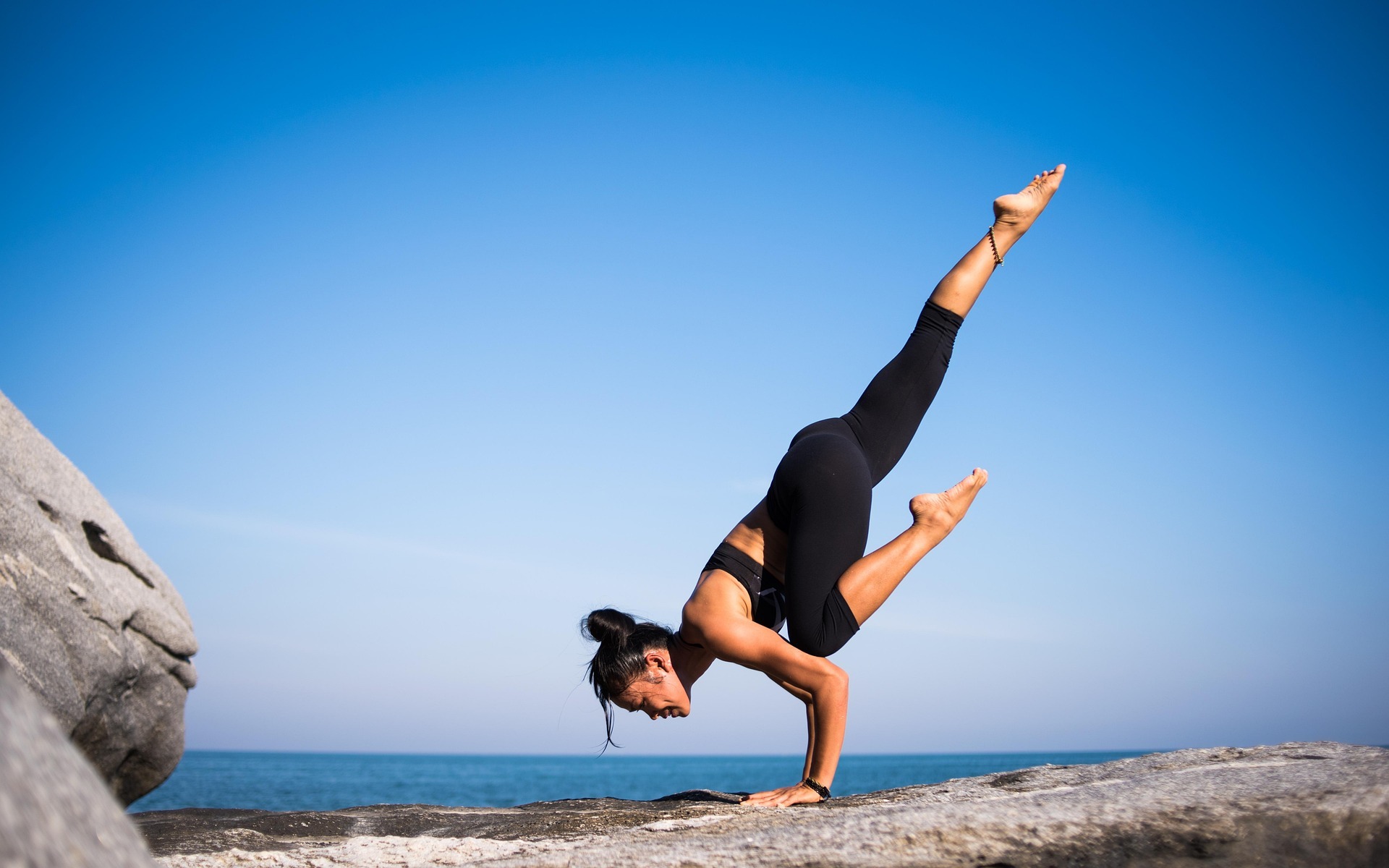Why Exercise Is the Ultimate Key to a Healthier, Happier Life
When we think of exercise, we often focus on weight loss or building muscle. But regular physical activity offers far more than just physical transformation—it’s a powerful tool for improving every part of your life.
From boosting your mood to helping you sleep better, consistent movement can change how you feel both inside and out. Studies show that exercise reduces stress, lowers your risk of chronic diseases like diabetes and heart disease, and even enhances brain function.
You don’t need a gym membership to get started. A brisk walk, home stretching routine, dancing to your favorite music, or taking the stairs all count. The key is to move more and sit less.
Beyond the physical, exercise builds confidence and self-esteem. It clears the mind, boosts energy, and brings a natural sense of accomplishment. And when done with others, it also becomes a fun social activity.
Whether you’re looking to feel better, think clearer, or simply live longer—exercise is one habit that pays off in every way. Start small. Stay consistent. Your healthier, happier life begins today.
Why Exercise Matters Today
In a fast-paced world dominated by screens, deadlines, and sedentary routines, regular exercise has never been more crucial. Movement is not just a health trend; it’s a life-saving, energy-boosting, and mood-lifting essential. Whether you’re 18 or 80, physical activity can transform your body, mind, and longevity. From better sleep to sharper memory and even improved intimacy, exercise is the key to living fully and aging gracefully.
Learn more about the importance of exercise from the CDC
Physical Health Benefits of Exercise
Engaging in consistent physical activity contributes significantly to overall physical fitness and wellness. Regular exercise helps regulate body weight, improves cardiovascular health, increases muscle strength, and boosts endurance. Aerobic activity such as brisk walking, swimming, or cycling strengthens the heart and lungs, while strength training enhances muscular and skeletal resilience.
Beyond aesthetics, exercise improves metabolic health by controlling blood sugar levels and reducing bad cholesterol (LDL) while increasing good cholesterol (HDL). It aids digestion, supports a stronger immune system, and helps maintain optimal blood pressure, making it vital for a healthy lifestyle.
Explore Mayo Clinic’s benefits of exercise
Mental and Emotional Benefits
Exercise is as much a mental workout as it is a physical one. Physical activity triggers the release of endorphins—natural mood enhancers—that help combat stress, anxiety, and depression. Studies consistently show that exercise reduces the symptoms of mood disorders and can be as effective as medication in certain cases.
Moreover, regular movement supports emotional stability and self-esteem. It improves sleep, clears mental fog, and helps you respond more calmly to everyday stressors. These benefits extend to all age groups, making exercise a powerful tool for mental health and well-being.
For furthen more on mental health read:
Mental Health Conditions: Depression, Anxiety, and Stress
See how physical activity impacts mental health at Mental Health America
Exercise for Disease Prevention
One of the most compelling reasons to embrace a daily exercise routine is its proven role in preventing chronic diseases. Cardiovascular disease, type 2 diabetes, obesity, and certain cancers are all significantly less likely to occur in physically active individuals. Exercise also reduces systemic inflammation, supports hormone balance, and enhances overall metabolic health.
For older adults, physical activity helps delay the onset of age-related illnesses like osteoporosis, dementia, and arthritis. Regular exercise is a proactive measure for maintaining independence and quality of life into old age.
Read about disease prevention through physical activity from WHO
Strengthen Your Muscles and Bones
Muscle strength and bone density naturally decline with age, but regular strength training can reverse or slow this process. Exercises like weight lifting, resistance band training, and bodyweight movements (push-ups, squats) improve muscle tone and support joint stability.
Weight-bearing exercises such as walking, running, and dancing also promote bone formation and help prevent osteoporosis. Strong muscles and bones mean fewer falls, better posture, and the physical capacity to enjoy everyday activities.
Visit the National Institute on Aging for strength training tips
Boosting Energy, Sleep, and Productivity
Feeling sluggish? Physical activity might be the answer. Exercise improves oxygen and nutrient delivery to tissues, enhancing cardiovascular efficiency and overall stamina. Even moderate activity can reduce fatigue and increase alertness.
Exercise also supports better sleep quality by regulating circadian rhythms and reducing insomnia. As a result, individuals often find themselves more focused and productive throughout the day, thanks to improved rest and increased physical energy.
Discover how exercise impacts sleep at Sleep Foundation
Brain Health, Memory, and Cognitive Function
A growing body of research confirms the strong link between exercise and brain function. Physical activity enhances memory, attention, and executive functioning through improved blood flow to the brain. It stimulates neurogenesis—the growth of new brain cells—and strengthens the hippocampus, the brain region associated with memory.
Aerobic activities, in particular, have been shown to reduce cognitive decline and lower the risk of neurodegenerative diseases like Alzheimer’s and Parkinson’s. Incorporating movement into your lifestyle is one of the most effective ways to maintain brain health over time.
Read Harvard’s guide on exercise and the brain
Improving Sex Life and Hormonal Balance
Physical activity plays a key role in sexual health and hormonal regulation. Exercise increases blood flow, which enhances arousal and performance. It boosts testosterone levels in men and helps balance estrogen and progesterone in women.
Feeling more confident in your body can also enhance physical intimacy. Reduced stress, improved mood, and increased energy levels make for a more satisfying and active sex life.
Learn more from Healthline on exercise and sex
Types of Exercise to Try
To reap the full benefits of physical activity, it’s important to diversify your workout routine. Here are a few categories to consider:
- Aerobic Exercise: walking, running, cycling, swimming, dance
- Strength Training: weight lifting, resistance bands, bodyweight workouts
- Flexibility and Balance: yoga, tai chi, Pilates
- Recreational Activities: hiking, team sports, martial arts
Mixing different types of exercise not only prevents boredom but also ensures well-rounded fitness that targets endurance, strength, and mobility.
How Much Physical Activity Do You Need?
The World Health Organization and U.S. Department of Health recommend the following:
- Adults: At least 150 minutes of moderate aerobic activity or 75 minutes of vigorous activity per week, plus two days of strength training
- Children and Teens: At least 60 minutes of physical activity daily
- Older Adults: Same as adults, with additional focus on balance and flexibility to prevent falls
These guidelines serve as a minimum—more activity often leads to greater health benefits, including better weight control and reduced disease risk.
Read the full WHO recommendations here
Safe Exercise for All Ages and Abilities
No matter your age, fitness level, or physical condition, there is a form of exercise suitable for you. Beginners can start with gentle walking or chair exercises, while those with disabilities can explore adapted programs.
Consult a health professional if you have medical conditions such as heart disease, arthritis, or diabetes. Start slow, use proper form, and listen to your body. Safety and consistency are more important than intensity at first.
Explore adaptive exercise tips at Verywell Fit
Making Fitness a Habit
Turning exercise into a daily habit starts with setting realistic goals. Begin with activities you enjoy, schedule them like appointments, and track your progress. Consider pairing workouts with something fun—like listening to a podcast or watching a show—to stay motivated.
Habit-building techniques include:
- Setting small, achievable targets
- Joining fitness communities or apps
- Rewarding yourself for consistency
- Keeping workout gear visible and ready
Check out expert habit tips from James Clear
Fun and Social Ways to Stay Active
Exercise doesn’t have to be a chore. It can be a joyful, social experience. Group classes, dance lessons, walking clubs, and recreational sports provide fun ways to stay active while connecting with others.
Even household chores or playing with your kids count as physical activity. The goal is to move more and sit less, in whatever way brings you joy.
Find local activities via Meetup
Common Challenges and How to Overcome Them
Lack of Time
- Try short 10-minute workouts
- Use breaks for quick stretches or walks
Low Motivation
- Set clear goals and track progress
- Find an accountability partner
Physical Limitations
- Choose low-impact activities
- Work with a trainer or physical therapist
Boredom
- Mix up your routine
- Try new classes or outdoor adventures
Frequently Asked Questions About Exercise
- Can I exercise every day?
Yes, but mix intensity. Include rest days or low-impact activities like walking or yoga. - What’s the best time to exercise?
Anytime you can stay consistent. Morning workouts boost energy; evening ones relieve stress. - Do I need a gym membership?
No. Home workouts, outdoor activities, or bodyweight exercises work well. - How long until I see results?
Most people feel better in 1–2 weeks and see physical changes within 4–8 weeks.
5. What if I miss a few days?
No problem! Just get back into your routine. Consistency over time matters more than perfection.

